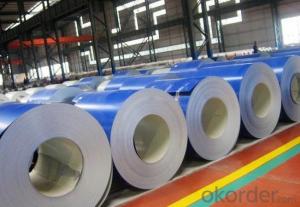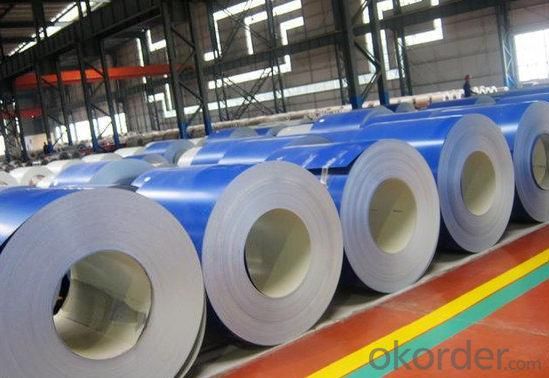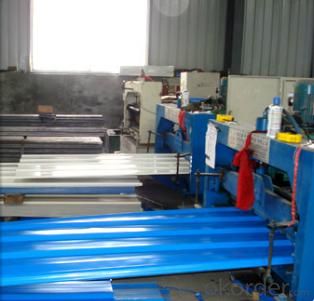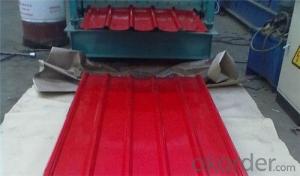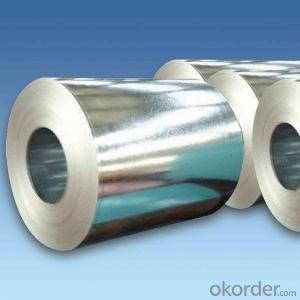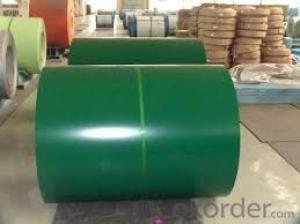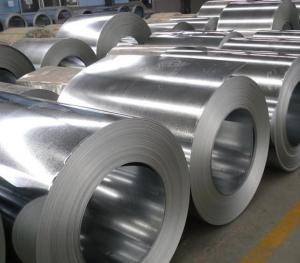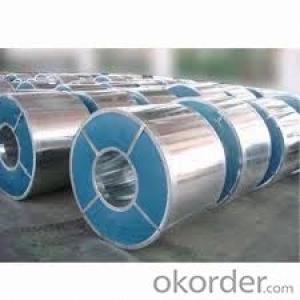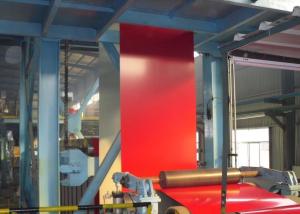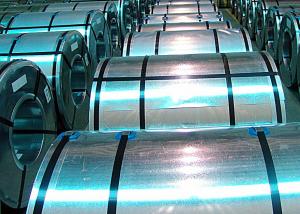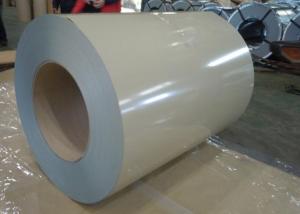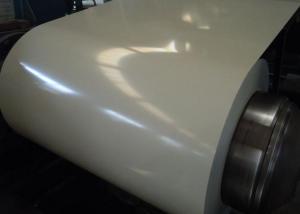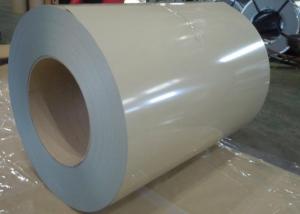Rolled Galvanized / Colored Coated Stainless Steel Coil
- Loading Port:
- Shanghai
- Payment Terms:
- TT OR LC
- Min Order Qty:
- 25 m.t.
- Supply Capability:
- 10000 m.t./month
OKorder Service Pledge
OKorder Financial Service
You Might Also Like
Structure of Colored Coated Stainless Steel Coil Description:
Color painted coils based with galvanized coils take hot-dip galvanized steel coil as its basic material.
Factory adopts the newest technologies and the most advanced equipmentsto degrease, rinse,chemical transform the cold-rolled steel coils or galvanized steel coils. Then we make primary and refined lavation for the steel strips.
We use worldwide advanced solidify furnace to solidify the coasting surface. Thiskind of color painted coils has excellent capability of decoration, molding,
corrosionresistance ability. It keeps the products with color coatings in flamboyantcolor for a long time.
Colored Coated Stainless Steel Coil Specification:
1 Thickness: 0.16 - 2.0mm
2 Width: 914 - 1,250mm
3 Lacquer: according to customer's needs
4 The color-coated steel coil is produced by hot-galvanized steel and color-5
5 coatedwith thepaint produced according to the American standards
6 The combining force between the galvanized steel and the paint is very strong
7 The surface is polished
8 Coat fabric 2/2 (two coats for top / two coats for bottom), 2/1 (two coats fortop / single coat for bottom), 1/1 (single coat for top / single coat for bottom)
Available colors: grey, bright red, sky blue, ivory white, yellow or customizedaccording to customers' request
9 Can be used in building material field, galvanized wire steel tape and all other fields
10 Base steel: DX51D ,Q195, Q215, Q235, Q345, Q195L, 08, 08AL, SPCC, SPCD, ST12, ST37, DC01, DC02 and DC03
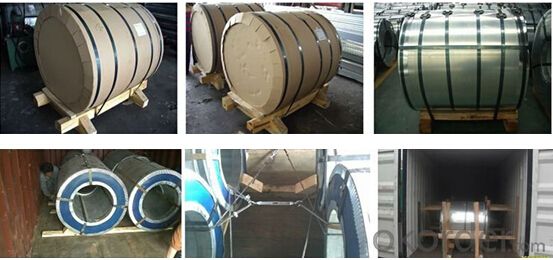
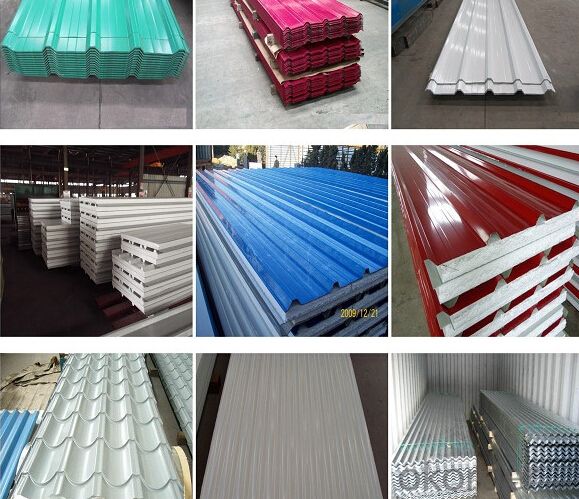
FAQ:
Acceptable payment term and way?
T/T,L/C, T/T + L/C, D/P
Acceptable price term
FOB CNF CIF DDU CPT
Do you accept OA payment terms?
Yes, sure, but it normally depending on the order value
Do you have QC team?
Yeah, sure, our QC team is very important, they will keep the qualitycontrol for our products.
What is the validity of your quotation?
Normally 7 days.
What is your advantage?
24 hour quick response /Customer oriented/ Credit foremost/ Top quality Excellent
What is your acceptable payment term?
TT,LC,OA etc
- Q: How are steel coils used in the production of food processing equipment?
- Due to their advantageous properties, steel coils find widespread use in the manufacturing of food processing equipment. These coils, typically crafted from stainless steel, are employed in the production of a diverse array of equipment, including mixers, blenders, conveyors, ovens, and fryers. The excellent resistance to corrosion exhibited by steel coils is one of the primary reasons they are preferred for use in food processing equipment. Stainless steel coils possess a high resistance to rust and can endure exposure to moisture and various food substances without deteriorating. This crucial characteristic ensures that the equipment remains hygienic and safe for food processing. In addition, steel coils provide exceptional strength and durability, enabling food processing equipment to withstand heavy use and harsh operating conditions. These coils can be shaped into various forms and sizes, making it possible to fabricate complex equipment components. This versatility facilitates the design and construction of equipment that is both efficient and reliable in processing a wide range of food products. Moreover, steel coils are simple to clean and maintain. The smooth surface of stainless steel prevents staining and simplifies the removal of food residues, thereby preventing the growth of bacteria. Regular cleaning and sanitation of food processing equipment are indispensable in maintaining food safety standards, and steel coils streamline this process, making it more effective. Furthermore, steel coils possess excellent heat conductivity properties, which facilitate efficient heat transfer in food processing equipment, such as ovens and fryers. This allows for precise temperature control and uniform cooking, ensuring consistent quality in the processed food products. In summary, steel coils assume a vital role in the production of food processing equipment by providing corrosion resistance, strength, durability, ease of cleaning, and efficient heat transfer. These qualities render steel coils an ideal material for manufacturing equipment that meets the stringent hygiene, safety, and quality standards required in the food processing industry.
- Q: Why?Which one should i get? I am just starting to learn Guitar. Which one would be better for me? What is the difference? I already got the acoustic nylon but i might return it... if the steel is better.
- Depends on what kind of music you want to play. Nylon string guitars are used for classical music, and sometimes for jazz, occasionally for folk music. Steel string acoustic guitars are used for almost everything else -- rock, pop, country, bluegrass, folk, blues, jazz, you-name-it. Some people will tell you that beginners should start on nylon strings because they're supposed to be softer on your fingertips but unless you plan to continue playing classical or jazz or folk on your nylon string guitar for some time to come, you're wasting your money. If you want to play rock, pop, country or almost anything else, get a steel string guitar, put light-gauge steel strings on it. Your fingertips are going to be sore for the first few weeks no matter what kind of strings you have on your guitar -- you might as well start off on a guitar that will have the sound you want for the kind of music you actually want to play. Nylon string guitars also have wider necks and fingerboards than steel string guitars, so if you have smaller hands, a steel string guitar will probably be more comfortable for you to play. Hope this helps.
- Q: I have several stainless steel utensils and appliances, so when I put them through the dishwasher some of them are rusting, I think its because my current dishwashing soap is harsh, what is some great dishwashing soap that will clean my dishes and not be so hard on my stainless steel appliances and utensils?
- Sorry to tell you this, but it is the quality of the stainless steel utensils. I had the same problem in the past. It pays to spend a little more when you plan to wash your silverware in the dishwasher. I did and I am very happy with the new silverware. I never changed my detergent, just a better quality silverware.
- Q: Can steel coils be coated with tin?
- Yes, steel coils can be coated with tin through a process called tinplating. Tinplating provides corrosion resistance and enhances the appearance of the steel surface.
- Q: I do a lot of scrapping and would like to be able to separate stainless steel from regular steel. The magnet test doesn't always work since stainless can be magnetic, but what are some ways that I can for sure tell the difference? Or even something like a sound that they make that may help me to tell the difference.
- Stainless steel uses chromium in its mixture to thwart the affects of corrosion. General steel, or carbon steel, is generally almost completely iron and is used for far greater applications than stainless steel. Stainless steel is used mostly in kitchen appliances, utensils, etc... The best thing I can come up with is to find a way to measure the chromium content of the steel you are looking at. If it's around 3% chromium, it's probably standard steel. If it's somewhere between 10-15% chromium it's probably stainless steel (or even 4% plus). I can't tell you a fast and quick way to test the steel because from my research, it appears there are as many grades and allows of steel as there are uses for steel! There is one test I've seen for home testing surgical steel which is a higher grade stainless steel, that is to put scotch tape on one section of material then soak it in water for a 24 hour period, then let it air dry for 24 hours. You remove the tape and lightly polish the exposed areas to see if there was any discoloration or pitting on the exposed area. This test is mainly for surgical steel jewelry, however stainless steel is supposed to resist rusting more than standard steel, hence it might work for other steel types as well. You may have to read some of the other links below to get some other ideas on how you can test steel to see if it is stainless.
- Q: How are steel coils used in the production of wire products?
- Steel coils are used in the production of wire products by being fed through a series of machines that shape and form the steel into wire. The coils are unrolled and passed through a rolling mill, where the steel is gradually reduced in thickness and elongated into wire. This wire is then further processed and treated to meet specific requirements, such as being annealed for improved strength or coated for corrosion resistance. Overall, the steel coils serve as the primary raw material for wire production, providing the necessary material for various wire applications across industries.
- Q: How do steel coils contribute to the water and wastewater industry?
- The water and wastewater industry heavily relies on steel coils as a crucial component for constructing and maintaining its infrastructure. These coils, made from high-quality steel, offer numerous advantages for the industry. To begin with, steel coils are essential in the production of pipes and tubes used primarily for transporting water and wastewater. Steel pipes are renowned for their exceptional strength and durability, enabling them to withstand high pressure and heavy loads. This makes them ideal for water distribution systems, sewage networks, and treatment plants. Steel coils provide the necessary material to manufacture these pipes, ensuring reliable and long-lasting infrastructure. Furthermore, steel coils are also utilized in constructing storage tanks and reservoirs. These tanks are vital for water treatment plants, serving as storage for large volumes of water or wastewater during the treatment process. Steel coils provide the required material for fabricating these tanks, guaranteeing their structural integrity and preventing leaks or contamination. Moreover, steel coils are used in manufacturing various equipment and components indispensable in the water and wastewater industry. For instance, steel coils are employed to produce pumps, valves, and control systems, which are crucial for the efficient operation of water treatment plants, pumping stations, and sewage networks. Steel's strength and corrosion resistance make it an ideal material for these applications, ensuring reliable and long-lasting equipment. Additionally, steel coils are also employed in constructing wastewater treatment plants and facilities. These plants employ various processes to eliminate contaminants from wastewater before discharging it into the environment. Steel coils provide the necessary material for constructing these facilities, including structural supports, tanks, and other components. The durability and resilience of steel ensure the longevity and efficiency of these treatment plants. In conclusion, steel coils play an integral role in the water and wastewater industry by contributing to the construction and maintenance of critical infrastructure. They are used in manufacturing pipes, tanks, equipment, and facilities, guaranteeing the strength, reliability, and durability required for the efficient operation of water and wastewater systems.
- Q: Which one would be stronger? And should damascus steel be tempered?Thank You
- Damascus steel is in history books only,no body knows its composition.THey just named a modern steel as Damascus steel
- Q: Obviously this is an easy question for anyone who works with metal. However, I am currently writing a book and had an idea that had to do with these two metals. Is it possible for gold to be folded into steel while it is being forged? Do 3-metal alloys exist? If this is not possible with current metal-working techniques and technology, what would be needed to make it possible? And finally, what exactly would the mixing of these two yield? A weak metal? A brittle metal? How would it compare to iron or gunmetal? If you have no idea, please offer speculations. Thank you!
- Well put it this way you cant gold steel but you can steel gold Kidding but seriously you can but ther would be no point the steel would be weaker and gold is expensive
- Q: I know that steel wool is coated with... something... that protects it from rusting. I need to know what that is, and how to get it off.
- It will be very effective if you remove the oil by appling protective polymer spin coating to the edge, top and underside of the wafer, which makes those surfaces impervious to most chemical etchants. To learn more about the spin coating theory you may check out the following source.
Send your message to us
Rolled Galvanized / Colored Coated Stainless Steel Coil
- Loading Port:
- Shanghai
- Payment Terms:
- TT OR LC
- Min Order Qty:
- 25 m.t.
- Supply Capability:
- 10000 m.t./month
OKorder Service Pledge
OKorder Financial Service
Similar products
Hot products
Hot Searches
Related keywords
